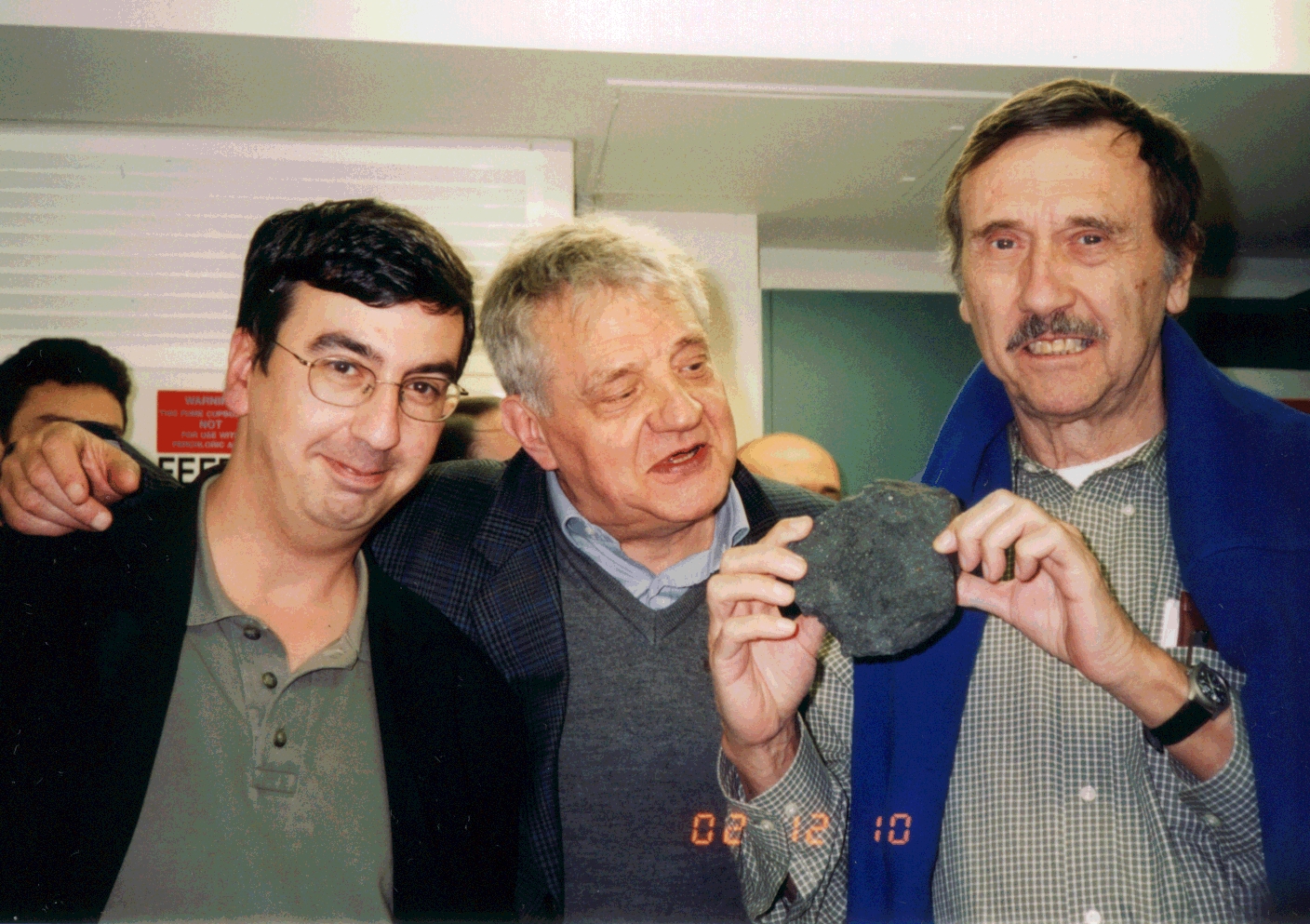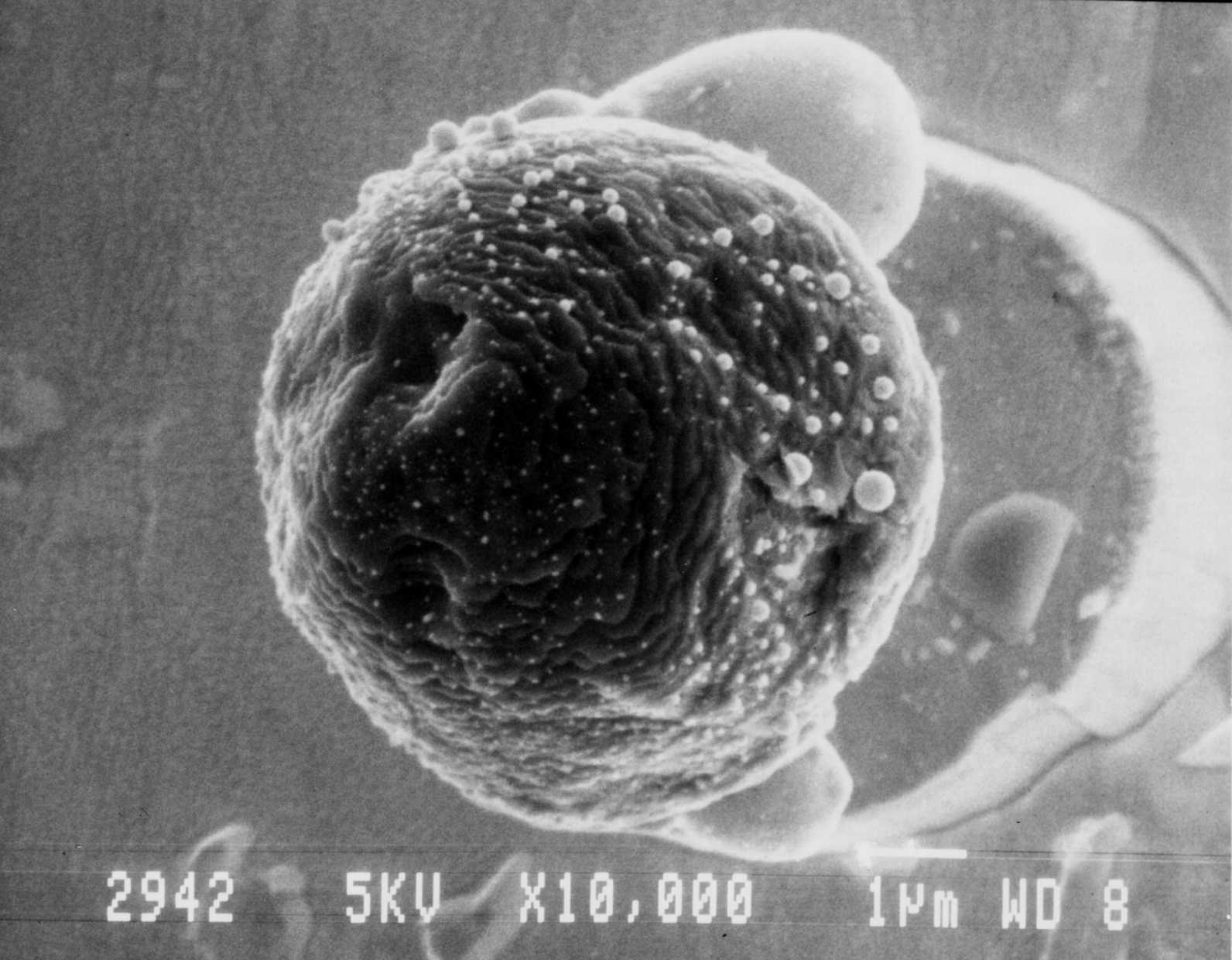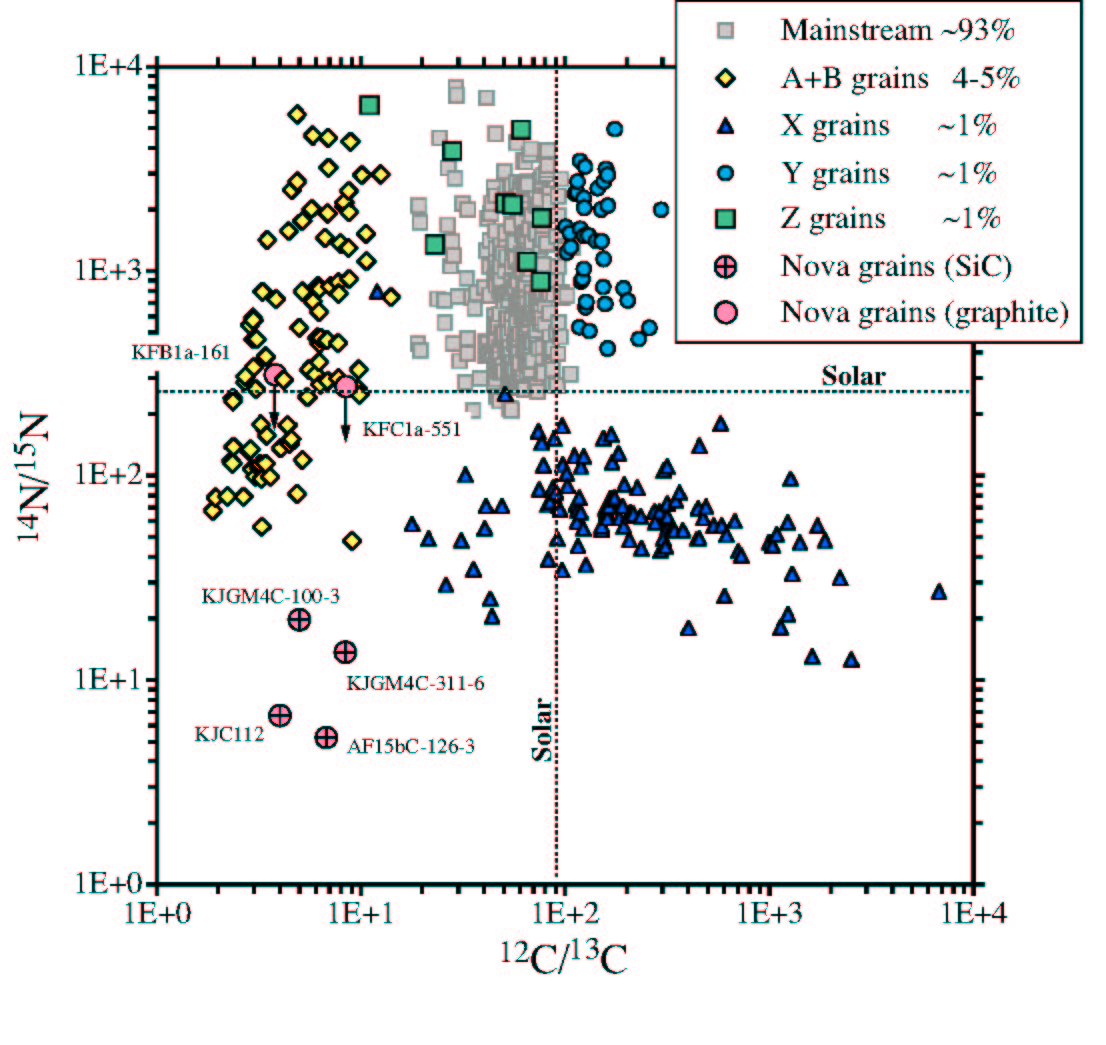Jordi José
Cosmochemistry:
Isotopic Anomalies in Meteorites
Presolar grains are tiny pieces of stardust isolated from primitive meteorites and interplanetary dust particles by the burning the haystack to find the needle method (that is, breaking up the meteorites into small pieces and dissolving them away in strong acids; analyses are then performed through a suite of different techniques, including secondary ion mass spectrometry -SIMS-, ion imaging, laser noble-gas mass spectrometry, scanning electron microscopy, transmission electron microscopy...).

Presolar grains are characterized by unusual isotopic abundance anomalies attributed to a suite of nuclear processes that took place in their parent stellar sources (that is, grains must have formed around other stars prior to incorporation into the pre-solar nebula in which the Solar System was born about 4.6 Gyr ago). Detailed analyses of these grains have opened up an amazing new field of astronomy raised by the first discoveries of presolar grains in meteorites, including
nanodiamonds (from the Allende, Murchison, and Indarch meteorites; see Lewis et al. 1987) and silicon carbide grains
(from the Murray meteorite; see Bernatowicz et al. 1987, Zinner et al. 1987). So far, silicon carbide (SiC), graphite (C), diamond (C), silicon nitride (Si3N4), silicates, and oxides, such as corundum (Al2O3) or spinel (MgAl2O4), have been identified as presolar grains.
In fact, the unusual isotopic abundance ratios measured in some of these grains (in contrast with the overwhelming chemical homogeneity of terrestrial samples) constitute a unique evidence of their presolar origin. Indeed, radioactive dating through long-lived isotopes has not yet been possible because of the reduced amounts of these cosmochronometers trapped in the grains. All SiC grains isolated from meteorites are presolar (that is, are characterized by non-solar abundance ratios); approximately half of the graphite grains are presolar, whereas ~2% of the spinel grains and only ~0.001-0.02% of the silicates are presolar.
Ion microprobe analyses of individual grains have revealed a variety of isotopic signatures that point towards several stellar sources, such as asymptotic giant branch stars (AGBs), supernovae, or novae.
Up to now, SiC grains have been the most extensively studied. They can be classified into different populations (that is, different stellar birthplaces) on the basis of their C, N, and Si isotopic ratios. It is now widely accepted that about ~93% of all SiC grains, the so-called mainstream population, are formed in the winds accompanying solar-metallicity AGB stars. About ~1% correspond to X grains, which are characterized by large excesses of
44Ca (attributed to in situ 44Ti decay) and 28Si, fingerprints of type II (i.e., core-collapse) supernovae. In addition, a variety of carbon-rich J-type stars are expected to account for ~4-5% of the overall SiC grains, the so-called A and B grains. Other populations include Y (~1%) and Z grains (~1%), whose origin is probably linked to low-metallicity AGB stars.

Secondary electron image of the graphite nova candidate grain KFC1a-551 after SIMS analysis. Image courtesy of S. Amari.
A rare variety of SiC grains (<1%), together with a couple of graphite grains, that exhibit a suite of isotopic signatures characteristic of classical nova outbursts, have been reported in recent years both from the Acfer and Murchison meteorites (Amari et al. 2001).
We closely collaborate with Prof. E. Zinner and Dr. S. Amari (Laboratory of Space Sciences, Washington Univ. at St. Louis), in an attempt to predict the expected chemical patterns that may characterize grains condensed in nova shells.
The goal is to provide cosmochemists with tools for the identification of the likely stellar paternity of grains
isolated from meteorites (see Clayton & Hoyle 1976; Amari et al. 2001; José et al. 2004; José & Hernanz 2007).

Carbon versus nitrogen isotopic ratios of nova candidate grains compared with those of SiC grains of different populations. Silicon carbide grains have been classified into several populations based on their C, N, and Si isotopic ratios.
References
Amari S., Gao X., Nittler L., Zinner E., José J., Hernanz M., & Lewis, R.,
2001, "Presolar grains from novae", The Astrophysical Journal, 551, 1065-1072.
Bernatowicz T., Fraundorf G., Tang M., Anders E.,Wopenka B., Zinner E., & Fraundorf P., 1987,
"Evidence for interstellar SiC in the Murray carbonaceous meteorite", Nature, 330, 728-730.
Clayton D.D. & Hoyle F., 1976, "Grains of anomalous isotopic composition from novae",
The Astrophysical Journal, 203, 490-496.
Clayton D.D. & Nittler L.R., 2004, "Astrophysics with presolar stardust", Annual Review of Astronomy & Astrophysics, 42, 39-78.
José J. & Hernanz M., 2007, "The origin of presolar nova grains",
Meteoritics & Planetary Science, in press.
José J., Hernanz M., Amari S., Lodders K., & Zinner E., 2004, "The Imprint of
Nova Nucleosynthesis in Presolar Grains", The Astrophysical Journal, 612, 414-428.
Lewis R.S., Tang M., Wacker J.F., Anders E., & Steel E., 1987, "Interstellar diamonds in meteorites", Nature, 326, 160–162.
Lodders K. & Amari S., 2005, "Presolar grains from meteorites: remnants from the early times of the solar system", Chemie der Erde, 65, 93-166.
Lugaro M., 2005, Stardust from meteorites: an introduction to presolar grains, Singapore: World Scientific
Publ.
Meyer B.S. & Zinner E. K., 2006, "Nucleosynthesis",
Meteorites and the early solar system II. Tucson: Univ. Arizona Press, pp. 69-108.
Zinner E.K., 2004, "Presolar grains", Treatise on geochemistry I, Oxford: Elsevier, pp. 17-39.
Zinner E., Tang M., & Anders E., 1987, "Large isotopic anomalies of Si, C, N and noble gases in interstellar silicon carbide from the Murray meteorite", Nature, 330, 730–732.
Cosmochemistry:
Isotopic Anomalies in Meteorites
Presolar grains are tiny pieces of stardust isolated from primitive meteorites and interplanetary dust particles by the burning the haystack to find the needle method (that is, breaking up the meteorites into small pieces and dissolving them away in strong acids; analyses are then performed through a suite of different techniques, including secondary ion mass spectrometry -SIMS-, ion imaging, laser noble-gas mass spectrometry, scanning electron microscopy, transmission electron microscopy...).

Presolar grains are characterized by unusual isotopic abundance anomalies attributed to a suite of nuclear processes that took place in their parent stellar sources (that is, grains must have formed around other stars prior to incorporation into the pre-solar nebula in which the Solar System was born about 4.6 Gyr ago). Detailed analyses of these grains have opened up an amazing new field of astronomy raised by the first discoveries of presolar grains in meteorites, including
nanodiamonds (from the Allende, Murchison, and Indarch meteorites; see Lewis et al. 1987) and silicon carbide grains
(from the Murray meteorite; see Bernatowicz et al. 1987, Zinner et al. 1987). So far, silicon carbide (SiC), graphite (C), diamond (C), silicon nitride (Si3N4), silicates, and oxides, such as corundum (Al2O3) or spinel (MgAl2O4), have been identified as presolar grains.
In fact, the unusual isotopic abundance ratios measured in some of these grains (in contrast with the overwhelming chemical homogeneity of terrestrial samples) constitute a unique evidence of their presolar origin. Indeed, radioactive dating through long-lived isotopes has not yet been possible because of the reduced amounts of these cosmochronometers trapped in the grains. All SiC grains isolated from meteorites are presolar (that is, are characterized by non-solar abundance ratios); approximately half of the graphite grains are presolar, whereas ~2% of the spinel grains and only ~0.001-0.02% of the silicates are presolar.
Ion microprobe analyses of individual grains have revealed a variety of isotopic signatures that point towards several stellar sources, such as asymptotic giant branch stars (AGBs), supernovae, or novae.
Up to now, SiC grains have been the most extensively studied. They can be classified into different populations (that is, different stellar birthplaces) on the basis of their C, N, and Si isotopic ratios. It is now widely accepted that about ~93% of all SiC grains, the so-called mainstream population, are formed in the winds accompanying solar-metallicity AGB stars. About ~1% correspond to X grains, which are characterized by large excesses of
44Ca (attributed to in situ 44Ti decay) and 28Si, fingerprints of type II (i.e., core-collapse) supernovae. In addition, a variety of carbon-rich J-type stars are expected to account for ~4-5% of the overall SiC grains, the so-called A and B grains. Other populations include Y (~1%) and Z grains (~1%), whose origin is probably linked to low-metallicity AGB stars.

Secondary electron image of the graphite nova candidate grain KFC1a-551 after SIMS analysis. Image courtesy of S. Amari.

References